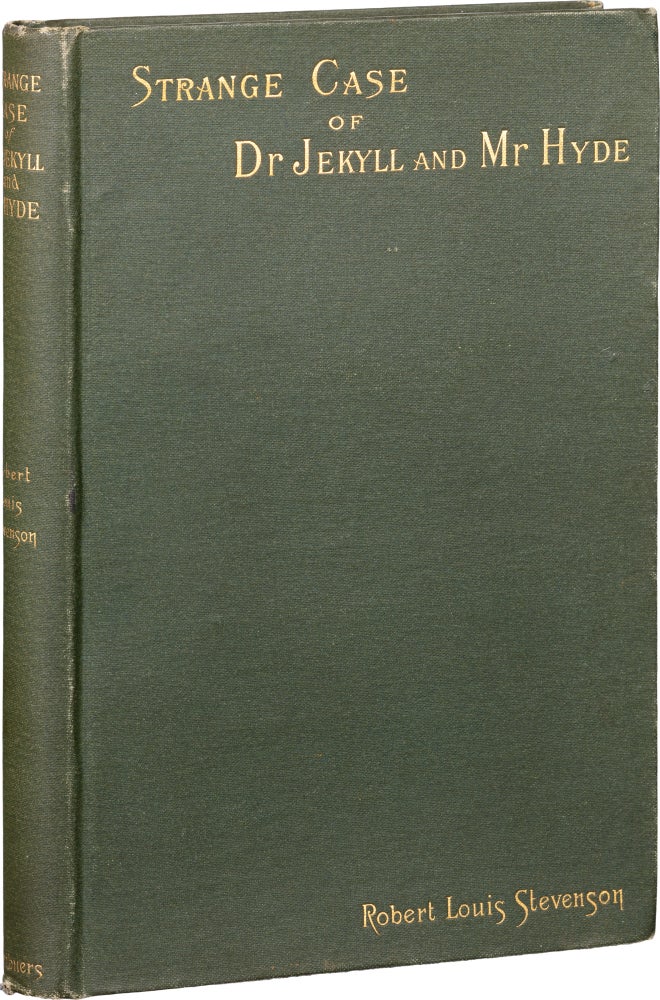Strange Case of Dr. Jekyll and Mr. Hyde
New York: Scribner's, 1886. First Edition. Hardcover. 1st edition, 1st printing, preceding the London edition in wrappers by 4 days and that in cloth by 11. Equally important, our copy is in the 1st issue (28.6% of the 1st printings) cloth binding, measuring 7 7/16” tall. The later issue cloth binding (almost identical) was made up from 1st edition sheets, rescued from unsold copies that had been previously trimmed for their binding in wrappers and by necessity bound to a smaller size (7 3/16”), and they are often sold, in anodyne portrayals, as 1st editions without any warning attached that they are the 2nd binding and the 2nd issue, and if a description doesn’t address the binding with measurements, or at least qualifiers, expect the copy offered to be wrong (full disclosure in book descriptions is, like AA batteries in toys, seldom included). And this kind of bibliographical deviousness exposes the low level of honor cultivated by many online booksellers, some of it just ignorance, and some of it willful, as the 2nd cloth binding is not only later but more common, as is the London edition. And the tragedy of many current booksellers is not that they know less, it’s that inaccuracy bothers them less. Tiny rubs to cloth, first 3 leaves darkened from acidic offset, still near fine, and its unspoiled beauty will satisfy the urges of your id, while its price will satisfy the moral conscience of your superego, a satiating equilibrium leaving no mediation work for your ego (the last copy at auction was the 2nd binding, 2nd issue, and it sold for $9,375 at HA, Oct 15, 2020, lot 45123). Near fine. Item #493
An historic and acclaimed 1st edition. The original concept occurred to Stevenson in a nightmare, and after one discarded manuscript, he was pressed to re–engage by a plea from his wife. He rewrote the story in 3 days, but he didn’t pull the idea out of the air. His literary influence descended from some of the greats, Hoffman’s The Devil’s Elixir (1814–1816), Hogg’s The Private Memoirs and Confessions of a Justified Sinner (1824), Poe’s William Wilson (1839), and Gautier’s The Double Knight (1840), and though Stevenson’s denouement is famous, it isn’t revealed until the last chapter. What comes right away is a neat burial of the exposition enveloped in an overlooked, unappreciated, and now forgotten, but cleanly articulated inspection of Victorian life at the end of that era, based on the author’s own experiences with a milieu he knew well, the upper middle class, highly communal world of authoritative men. And in examining their existence, Stevenson targets the shallow hypocrisy of a social strata in which concerns about façade, such as appearance and dress, are everything. He is subtle about it, but he questions the common sense of a worldly acceptance that rests on a delusion, the strange error that personal worth depends on the thoughts, opinions and applause of strangers who are just as insecure and insincere as those they are judging, and that it is a weird life indeed (true in social media today), to be always living it in somebody else’s imagination.
It has been adapted dozens of times into film and television. The first film was in 1908 and the 1931 adaptation—with transcendant visual effects—won Fredric March an Oscar for Best Actor.
Price:
$6,500.00


